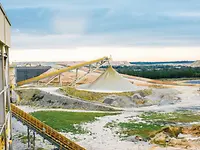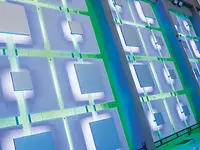A quantum leap
This was not the only leg of the journey in which the forest management and wood-processing group SCA received active support from ANDRITZ. The Helios project, which planned to completely modernize and extend the pulp mill near the university town of Sundsvall, took almost three years. Throughout this entire period – and partly in the years preceding it as well – a large team of ANDRITZ experts from Sweden, Austria, Finland, and Germany was actively involved and worked closely together with SCA.
The topics were manifold and extended from the planning, concept, and control of important areas of the mill extension to delivery and start-up of innovative technologies and on to management of work safety.
SCA invested almost eight billion Swedish krona in modernization of the mill, in which around 8,000 employees were involved over the total project duration. The pulp mill, which was started up in June 2018, is one of the largest industrial investments in Sweden, and there is, above all, one very good reason for this: Bleached softwood pulp is in demand all over the world. In the past ten years, the global market saw growth of 1.5 to 2 percent per year. “We are now increasing our annual capacity gradually from 430,000 to 900,000 tons of softwood kraft pulp,” says Ingela Ekebro. Achieving this goal would be a world record. About half of the production volume will be used for SCA ’s own paper production, while the rest will be sold to external tissue producers.
System knowledge from A to Z
The project was also a huge undertaking for ANDRITZ, both technologically and in terms of organization. After all, how is it possible to modernize a pulp mill extensively while it is in full operation and then disrupt ongoing operations as little as possible during this work? All this in a very confined space: The mill premises are bordered by the sea on one side and a railway track on the other. Space is a luxury here, so the logistics were correspondingly complicated. Machines, components, and working materials had to be delivered to the site “just in time” and such that all those involved did not get in each other’s way. “Together with SCA, we divided the entire project into several phases and sub-projects that we worked through in small steps, flexibly, and in close coordination,” Henrik Grönqvist, project director from ANDRITZ, recalls. “Of course, there are numerous technical and organizational obstacles in a project of this magnitude,” adds Göran Bröttgårdh, who handled the business side of the project as its commercial director. “So open, trusting, and professional communication were of the essence.”
In addition to extending the ANDRITZ HERB recovery boiler, ANDRITZ was involved in other process areas. In total, there were ten separate ANDRITZ start-ups, including five in the white liquor plant, two in the wood processing area, two in pulp drying, and then the recovery boiler start-up. Here, the Group supplied and installed the following production technologies and equipment: a debarking system with two parallel debarking and chipping lines, a new, energy-saving pulp drying system, new recausticizing machinery, as well as the ANDRITZ LimeFlash technology and upgrade of the existing wood dust burner system to increase the capacity of the existing lime kiln. These components contribute both individually and collectively to increasing the output and efficiency of the mill and keeping the use of resources very low.












